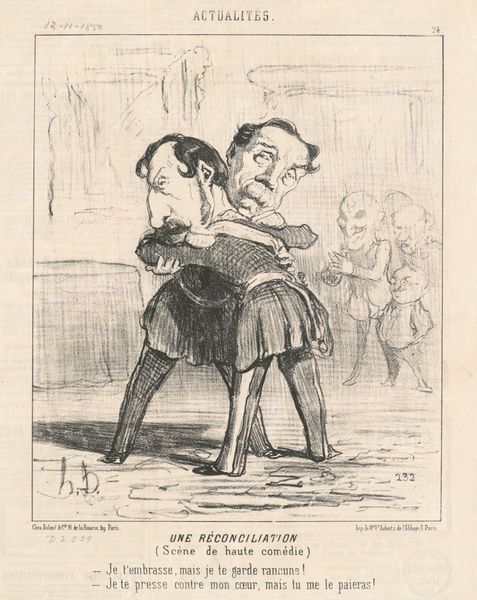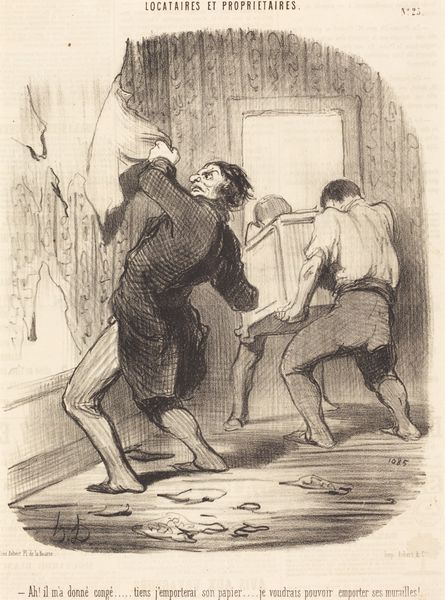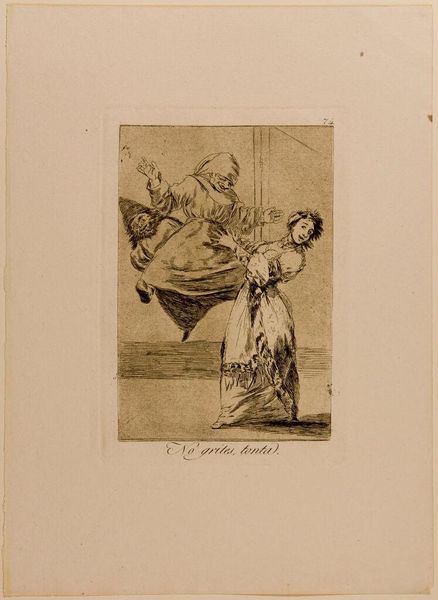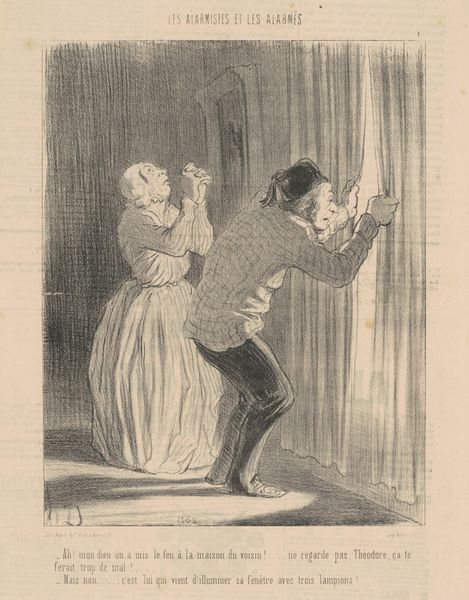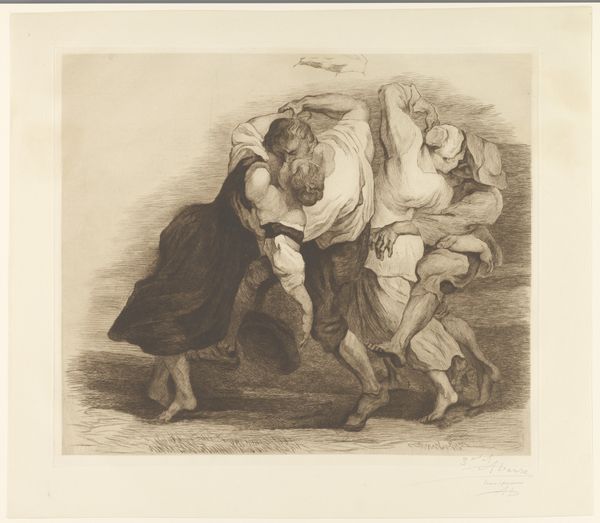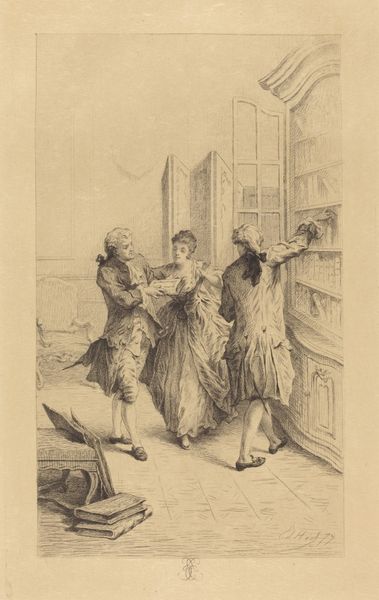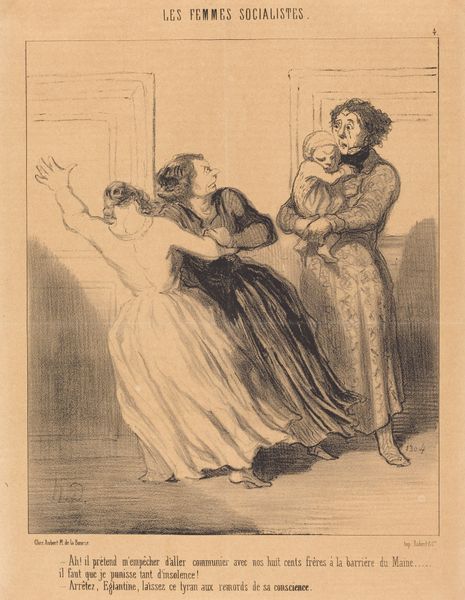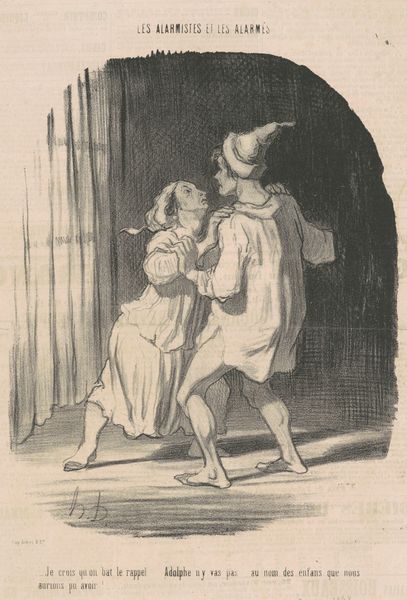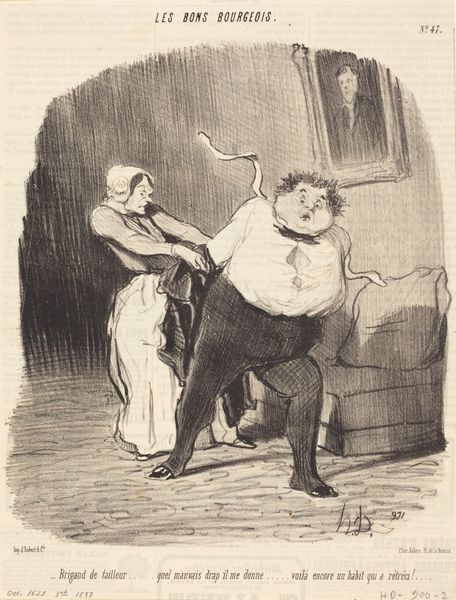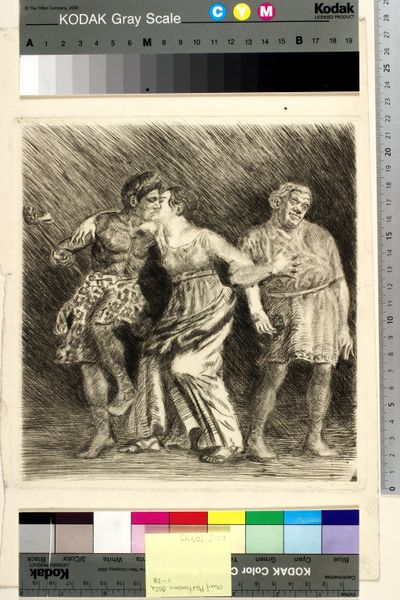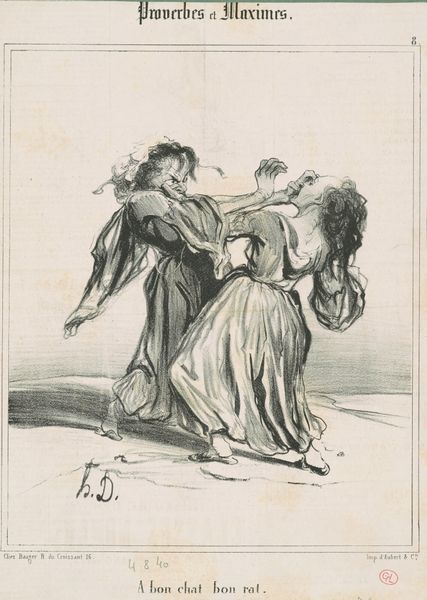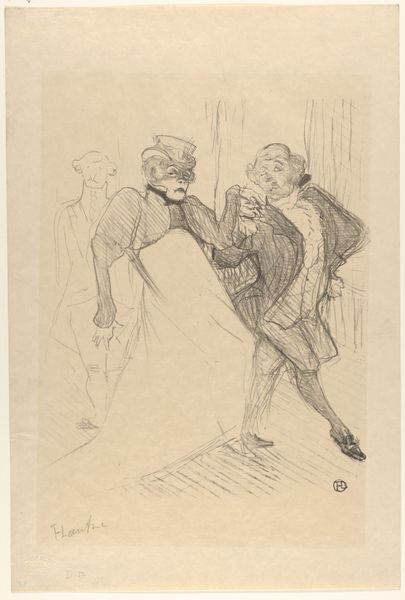
lithograph, print
#
aged paper
#
toned paper
#
lithograph
# print
#
caricature
#
social-realism
#
romanticism
#
genre-painting
#
history-painting
Copyright: National Gallery of Art: CC0 1.0
Curator: Here we have Honoré Daumier’s lithograph from 1844, entitled “Je t'ai déjà défendu de m'appeler maître…” Editor: Well, the initial feeling is… unsettling. There’s a stark contrast in the subjects' gestures—almost theatrical in its exaggerated forms, set against a seemingly domestic space rendered in monochromatic tones, implying restraint but the scene expresses brutality. Curator: Precisely. Daumier uses lithography to create a critical, and at times biting, commentary on the social mores of his era. Note the crisp lines and the expert use of shading that gives volume to the figures. The composition guides the eye directly to the figures and the performative gesture. Editor: The layering of tones feels key. Daumier is using lithography to cheaply replicate what I suspect is, a critique on the bourgeoisie. Its serial nature is an intrinsic part of its commentary on power, industrialization and class. The materials themselves, like the mass distribution method, carry significance. Curator: Yes, this work is a piece of social realism infused with a satirical romanticism. It is about surface versus reality. Daumier masterfully employs caricature to expose hypocrisy. This particular image speaks volumes about the philanthropy, as described in the series title, of the period and all the unequal conditions tied into those gestures. Editor: And observe how Daumier is embedding what reads as racial and class commentary through the materials. The figure of color, physically under assault is positioned as a figure in subjugation. A brutal choreography unfolds that would be cheaply sold. Curator: The picture hanging on the wall, if we zoom, offers a parody of idealized subject, as if making an explicit remark of an imbalance of power within that society and its so-called noble subjects. Editor: To circle back, it’s compelling how the materiality and means of production function not merely as supporting elements but fundamentally inform its meaning and its accessibility for broader reach. The piece serves as a stark artifact. Curator: It leaves us to think on these lasting reflections about power dynamics and how these translated into accessible artistic formats. Editor: Agreed, Daumier has laid bare the intricacies of his time in print, prompting dialogue that endures.
Comments
No comments
Be the first to comment and join the conversation on the ultimate creative platform.
